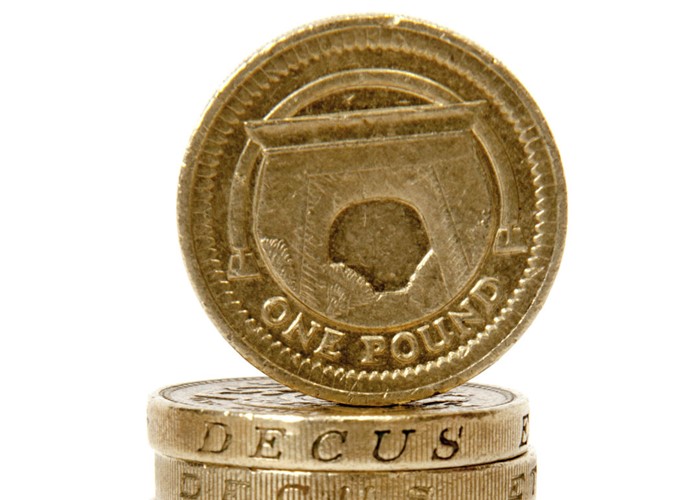ClearAccount: new service stops you going overdrawn

ClearAccount offers to top up your bank account when you’re about to go overdrawn, but this borrowing comes at a high price.
Another day, another company targets cash-strapped borrowers with a short-term, high cost credit facility. The latest is ClearAccount, which describes itself as “the short term credit facility with a difference”.
The difference is that instead of the borrower applying for a loan when they need some cash, ClearAccount will keep an eye on their current account and top it up when they’re about to go into unauthorised overdraft.
Let's have a look at whether this is a good way to borrow.
Compare current accounts with free overdrafts
How does Clear Account work?
ClearAccount offers “a revolving credit facility” of between £100 and £500 and charges 1% of the outstanding balance per day. So if you borrow £100, you’ll be charged £1 a day; borrow £500 and it will cost you £5 a day. This equates to an APR of 89.5%.
The fees only apply for the first 40 days the balance is outstanding – the interest is frozen after that point.
The company markets itself as an alternative to expensive unauthorised overdraft charges. Borrowers can choose to have their account automatically topped up when they’re running out of cash, or they can manage their account manually.
Automatic top-ups
ClearAccount’s automatic top-ups, or 'SafetyNet' feature, requires users to hand over not just their bank account number and sort code, but their debit card details and internet banking log-in details too.
ClearAccount uses US data provider Yodlee to provide online account viewing tools and says bank details are encrypted and held securely.
This gives the company “read access” to your bank account. It then reviews your balance and transactions on a daily basis and tops up your account when necessary.
Compare current accounts with free overdrafts
Repayments
As well as automatically topping up your account with money, Clear Account also automatically takes it back.
Its website says: “ClearAccount takes a payment once you can afford to repay and there is enough money in your bank account. If your new bank balance doesn't cover the loan amount in full, we may take a part payment to reduce your balance owed and interest charged.”
Alternatively borrowers can make a manual repayment at any time, either for the full loan amount or part of it.
In theory automatic repayments mean that come payday ClearAccount will raid your bank account leaving you short when it comes to paying other bills such as your mortgage or rent. You can borrow more money though, but this could mean ending up in a cycle of debt each month.
How do rates compare?
Borrowing £100 for four weeks with ClearAccount will cost you £28. Admittedly it’s cheaper than payday loan Wonga (which charges £35.04) but not by much.
ClearAccount reckons it’s cheaper than unauthorised overdrafts, but I’m not so sure. Borrowing £500 for two weeks would cost £70 with ClearAccount – but several banks are cheaper.
Nationwide’s FlexDirect charged £5 a day for unauthorised overdrafts, capped at £60 a month. So being £500 overdrawn for two weeks would cost £60.
HSBC charges 19.9% plus a £25 overdraft fee for unauthorised borrowing. Borrowing £500 for two weeks would cost £28.49.
Emergency borrowing with Barclays costs £5 a day up to a maximum of £35 a month.
However, for smaller amounts ClearAccount could work out cheaper. For example, a £100 loan for a week would cost £7 with ClearAccount but £35 with Nationwide if you didn’t arrange your overdraft in advance.
Alternatives
These days there are no excuses for not realising you’re about to go overdraft. Some banks offer text alerts while most offer mobile apps, and all offer online banking, so you can keep an eye on your account wherever you are.
If you need to extend your overdraft your bank is likely to be sympathetic so plan ahead if you think you might drift into the red.
If you have a credit card this will also be cheaper than ClearAccount as, assuming you can repay the bill in full each month, you can take advantage of the standard 56 days interest-free offered by credit card providers. Even better, a 0% money transfer credit card could cut your interest rate to zero for up to 30 months.
Credit unions are another option as they have a maximum APR of 26.8%.
Compare current accounts with free overdrafts
More on banking and borrowing:
Where to find the cheapest overdraft
Tesco Bank launches current account paying 3% interest
Most Recent
Comments
-
Emma, when are you going to correct the APR in paragraph five? You were alerted to it by SeaBee some 3 days ago... this is a crucial part of the article as even those of us who don't use our overdraft facility would probably consider signing up for a service that is several orders of magnitude cheaper than a pay day loan, just for the safety feature. Instead of which you are pushing a Wonga.com (other rip off lenders available too) sort of product as a being much cheaper. This isn't exactly great for a financial advice website... Update: to be fair to Emma (although it doesn't take much to work out they are talking rubbish) the ClearAccount website quotes an APR of 89.5%... I've just reported it to the FOS, which I assume is the right place.
REPORT This comment has been reported. -
That's a good question. I will ask Clear Account what happens if you owe them cash and never get back in the black.
REPORT This comment has been reported. -
Cheaper using a credit card ? I don't think so. You say that we could take advantage of the 56 day interest free ( period ? ) offered by credit card providers but, to the best of my knowledge money borrowed this way incurs interest immediately. Also There seems to be a gap in the logic concerning repayments: If I were to borrow £500.00, after 40 days it would have incurred interest of £200.00, at which point the interest would be frozen. Now supposing I make sure that my account does not go back into the black. From what you have told us Emma, ClearAccount would not be able to automatically recover this loan/interest. I know this is far-fetched, but I am sure that there are some individuals who would be quite able & willing to do this. Is there something you have not told us ?
REPORT This comment has been reported.
Do you want to comment on this article? You need to be signed in for this feature









14 June 2014